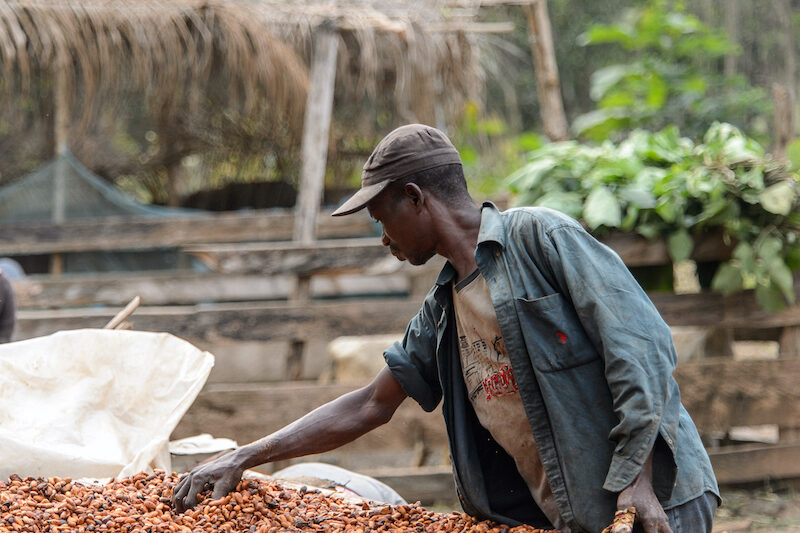Ghana’s government confirms 50% increase for cocoa farmers, matching Ivory Coast’s move

Cocoa farming in Ghana. Pic: Shutterstock
Ghana’s government has confirmed that it has moved to follow in the footsteps of neighbouring Ivory Coast to increase cocoa price payments to farmers, which will rise 58% to GH¢ 33,120.00 ($2.47kg), in response to major global rises sector values, reports Neill Barston.
The issue has gained unprecedented international focus over the past few months, as crop prices have spiralled to more than $10,000, reaching nominal market highs on the commodities New York Futures market, and a similar level in London’s ICE exchange, causing widespread concern across the industry.
As Confectionery Production covered earlier this week, the President of the Ivory Coast Alassane Ouattara stepped in to enhance farmer pay – with rates paid to agricultural collectives in the country previously set last year at just $1,800 a tonne – which was a mere fifth of the sums being fetched on the commodities market. The 50% increase agreed this week, takes that to $2.47kg ($2,470 a tonne).
According to regional reports, market observers had feared that if Ghana did not respond in kind to raise its own rates, this would lead to greater levels of cocoa smuggling that has been a reported factor of considerable concern to authorities. This has been a prominent issue in recent periods due to the fact that neighbouring West African nations have reportedly been able to command notably higher rates for their cocoa, as they are not locked in to the present system of year-ahead advanced fixing of contracts seen in both Ivory Coast and Ghana – which many sector analysts have asserted requires significant reform.
As for trading on the New York Futures market, prices have remained comparatively high, recording levels just under the $10,000 mark by end of trading on Friday, with analysts remaining concerned that the two-year cocoa supply deficits may well continue into a third year. This has been down to a combination of factors, including successive poor harvests, influences by adverse weather conditions, which have been worsened by crop diseases impacting cocoa production.
Furthermore, the Futures market rises have also played a factor, with hedge funds and other investors involved in a heightened period of trading on the market which many observers have linked to the rapidity of the price increase.
The decision by governments to set and sell prices a year in advance, when prices were much lower has also been cited by the sector as another influential factor in the situation. Other ongoing issues include farmers impacted by ‘galamsey’ illegal gold mining – with speculators in the region placing pressure on rural communities to sell up, as well as the comparatively high price of key agricultural inputs such as fertilisers meaning that quality of harvests has been notably impacted.
On the decision by Ghana yesterday to raise its rates, Cocobod, the nation’s cocoa authority, said that the “increase in the producer price of cocoa has become necessary to enhance the income of cocoa farmers in line with the vision of the NPP government and in response to the rising prices of cocoa on the international market.”
According to the organisation, it added that the welfare of cocoa farmers was a cause dear to the heart of His Excellency Nana Addo Dankwa Akufo-Addo, President of the Republic of Ghana.
Cocobod added: “It is for this reason that since the NPP government assumed office in 2017, the producer price of cocoa has been increased by 336% from GH¢7,600 per tonne in the 2016/17 cocoa season to an unprecedented level of GH¢33,120 per tonne for the rest of the 2023/24 cocoa season.”
